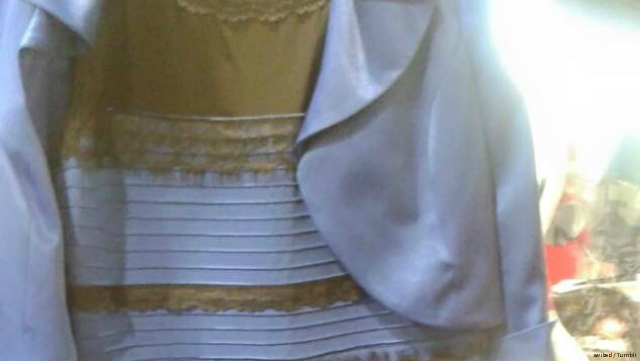Filtered By: Scitech
SciTech
What color is this dress? Here's the real answer

Ever since the story broke online, this dress has had netizens divided not just over what its actual colors are, but also just why it is that people see different colors in the first place.
False leads
One of the earliest "explanations" came from a Twitter user who claimed the whole thing was just an "experiment" to test viewers' emotions:
Thank you all for taking part in my 'white and gold' 'black and blue' dress experiment. Read on for info. Thanks. pic.twitter.com/44Jb00FAno
— BradTheLadLong (@BradTheLadLong) February 27, 2015
However, the comment was apparently made tongue-in-cheek and no follow-up explanations nor citations were given, thereby undermining its credibility.
Another, seemingly more sensible explanation talked about how the inner structure of the eye perceives light:
An explanation why you see this dress as blue and black or white and gold. pic.twitter.com/ayXpqavC9B
— Andy Rexford (@andyrexford) February 27, 2015
But while it's basically on the right track, the above explanation is still a bit off because of its inaccurate description of the retina—cones and rods don't "stick out" of the retina at all—and how our visual perception of color works.
A trick of the light
It was, however, one of the earliest explanations that posited that lighting conditions may have something to do with the phenomenon.
And indeed, one Vine user demonstrated that even just tilting your computer screen can change your perception of the dress's colors:
Bringing in the experts
Vice.com contacted color vision expert Dr. Jay Neitz of the University of Washington, who said that the phenomenon may be a combination of the lighting and the way our brains are hardwired:
"If I go into a room and I turn on a light that's completely red, the white things will reflect all that red light," Dr. Neitz explained. "But if I also have a red thing, then that will reflecting the red light, too." So when your brain tries to process what color something is in the red light, its best guess is to say that it's white—even if, in normal lighting, it's actually red.That's likely what's going on with the photo here: The photo was probably taken in blueish lighting, which makes your brain think that the dress is actually white. That makes sense. What doesn't make sense is why some peoples' brains perceive this as blue and others perceive this as white.
Meanwhile, in what is so far the most comprehensive if not definitive explanation yet, Wired also chalked it up to "primal psychology":
Usually that system works just fine. This image, though, hits some kind of perceptual boundary. That might be because of how people are wired. Human beings evolved to see in daylight, but daylight changes color. That chromatic axis varies from the pinkish red of dawn, up through the blue-white of noontime, and then back down to reddish twilight. “What’s happening here is your visual system is looking at this thing, and you’re trying to discount the chromatic bias of the daylight axis,” says Bevil Conway, a neuroscientist who studies color and vision at Wellesley College. “So people either discount the blue side, in which case they end up seeing white and gold, or discount the gold side, in which case they end up with blue and black.”
To put it simply, "your brain tries to interpolate a kind of color context for the image, and then spits out an answer for the color of the dress."
The real answer
Meanwhile, the two women who were behind the original photo finally came forward and thankfully laid to rest at least half of the controversy.
Twenty-one-year-old Scottish singer Caitlin McNeill told Business Insider that the photo came from her friend's mother, who had worn the dress to her friend's wedding.
"I got to the wedding and the mother was wearing the dress," McNeill said. "Obviously it was blue and black." — GMA News
More Videos
Most Popular




